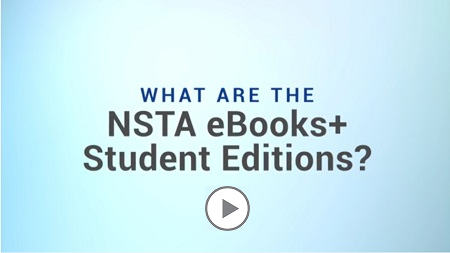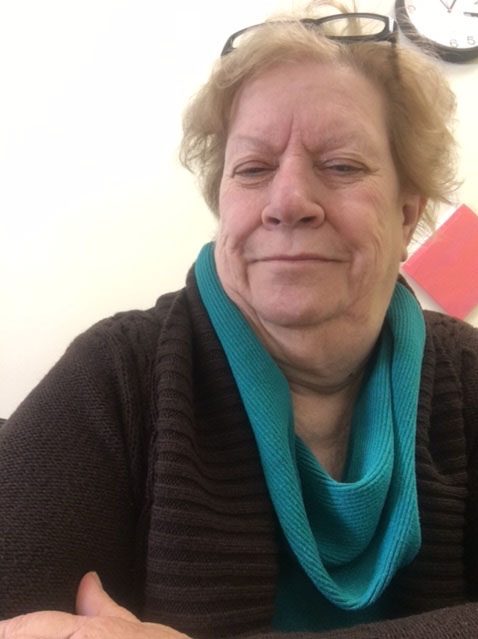Enhanced E-books Student Editions, Part I: Providing Teachers With Tools for Managing Student Learning
By Carole Hayward
Posted on 2017-03-22
NSTA recently launched e-Books+ Student Editions. In addition to the impressive array of topics, the student editions come with the tools that allow teachers to manage their students’ learning in useful ways.
Created for students in grades 6-12, these interactive e-books include animations, videos, simulations, embedded assessment, slide shows, and high-resolution images. These interactive e-books are between 100 pages and 200 pages long and are intended to supplement your classroom curriculum. Note that English language arts e-books focused on STEM concepts for students in grades K-5 are in development and will be available in the not too distant future.
The topics currently available are for middle and high school students. The student editions are housed on a Child Online Privacy Protection Act (COPPA) compliant site. Students go to the NSTA Reader or use the NSTA Reader app. They log in using the username and password that was assigned to them by their teachers.
This new video highlights many of the features of the student editions.
Features of the Student Editions
In the NSTA Reader, using the student editions, teachers can:
- Assign students to classes and project groups
- Assign projects and homework to students by class, group, or student
- Make use of the assessment bank from e-books
- Create and grade digital or print assessments
- Upload students in bulk; add review questions
- Grade student assignments
- Send notifications and other messages to students
- View license information
- View class and student progress in the e-books
- View class and students results for review questions and assessments
- Export data in Excel spreadsheets.
NSTA has created step-by-step instructions for teachers to use the NSTA Reader.
These tools are not available with the professional learning editions. The student editions currently are licensed for a period of one year with multiyear options coming soon.
In the student editions, students can take advantage of these features:
- Highlight, draw, and take notes directly in the e-book
- Answer review questions
- Upload completed assignments (formats: pdf, Word, Excel, video, audio, image, URLS)
- Access notes/highlights/assignments from different devices
- Complete teacher or e-book assessments from within an e-book
- Post to class blogs
Additionally, administrators can:
- Assign teachers to classes
- Assign classes
- Keep track of teachers teaching what class with what material
- Bulk upload classes and teachers
- Add review questions
- View content assigned to a class
- View content assigned to a student
NSTA provides step-by-step instructions for administrators to use the NSTA Reader.
Student Edition Topics
The student editions support the disciplinary core ideas of the Next Generation Science Standards. The table below features all 23 topics currently available. Visit the Enhanced E-books Student Edition page and scroll through to learn more about each topic.
 |  |  |
 |  |  |
 |  |  |
 |  |  |
 |  |  |
 |  |  |
 |  |  |
 |  |
Heading to the NSTA National Conference in LA?
Visit the Science Store or Booth 534, and try out the Enhanced e-Books for yourself.
Contact and Ordering Information
All purchases of eBooks+ Student Editions must be completed through NSTA’s Customer Service Department. Order by phone (1-800-277-5300) between 9 a.m. and 5 p.m. ET) or fax (1-703-243-7177). Or email us at orders@nsta.org. Download an eBooks+ Student Edition order form.
Pricing information is available per e-book/student/year. For any other questions regarding NSTA’s eBooks+ Student Editions, please contact ebooks@nsta.org.
Follow NSTA
Save
NSTA recently launched e-Books+ Student Editions. In addition to the impressive array of topics, the student editions come with the tools that allow teachers to manage their students’ learning in useful ways.
Career of the Month: Fire Protection Engineer
By sstuckey
Posted on 2017-03-22
Fire protection engineers help protect people from fire and explosion hazards by ensuring that buildings have adequate exits, that flammable substances are controlled, and that everyone operating near such hazards takes necessary precautions. Nancy Pearce is a fire protection engineer for the National Fire Prevention Association (NFPA).
Work overview.
Many fire engineers work behind the scenes to help design equipment or buildings to prevent or withstand fires. Others figure out what building materials are required and how to configure exits or hallways to allow quick escape in case of a fire. Some fire protection engineers conduct investigations after fires or do research on materials that may provide better fire resistance.
My focus is on codes that protect industrial workers from fire and

Fire Protection Engineer Nancy Pearce
explosion hazards. I help experts in the field write and revise fire-protection codes and standards adopted by many government agencies. Revisions occur as new information becomes available. After explosions in Texas killed firefighters a few years ago, for example, I worked with experts to rewrite the ammonium nitrate code that spells out how to properly use that chemical and respond to such fires.
People who have questions about the codes call me to interpret them. For example, someone applying for a July 4 fireworks display permit may want to know at what angle to set up the fireworks and how far away spectators must be from particular types.

Nancy Pearce visits a barge on the Charles River to review how mortars are set up before an Independence Day fireworks show in Boston.
©2016 National Fire Protection Association and Nancy Pearce
My job involves much reading and research as well as traveling to conduct training sessions on how to apply the codes and to visit facilities that may be performing a new process. My math training helps me do the necessary calculations for the codes, and my science background helps me understand the reasons behind the code requirements, such as why a chemical has a particular fire property and which materials should not be stored together for safety reasons.
My career has been rewarding and exciting. Yet it’s frustrating when fatalities occur because people didn’t follow the fire codes. The NFPA often gets involved when there is a major fire. Recently, the association deployed three people to support investigators of a deadly fire in Oakland, California, involving a warehouse being used as a dwelling. Sadly, fatalities are often a matter of noncompliance with fire codes.
Career highlights.
It’s very dangerous for workers to enter tanks, manholes, and so on. I had the opportunity to create a committee of top experts and work with them to develop a standard for confined-space entry that should improve safety.
Career path.
After graduating from college, I worked in a lab but decided I’m better suited to a people-oriented job. So I eventually took a job as an industrial hygienist for the State of Massachusetts. In that role, I worked on a number of programs, starting with one focusing on getting asbestos out of schools. I also visited different workplaces to help protect workers from dangers, ranging from blood-borne pathogens to high-noise levels to amputations. The job involved a lot of science and math to carry out tasks such as collecting air samples and calculating exposure levels. I did that for almost 28 years.
Five years ago, I began working as a fire protection engineer for the NFPA.
Knowledge, skills and training needed.
You need a math, science, and engineering background, but you can enter this type of career from multiple disciplines—for example, from chemical, mechanical, or civil engineering—and then get plenty of on-the-job training. Several universities offer specific degrees in fire protection engineering and industrial hygiene.
Advice for students.
Look at online videos and talk to people who are working in these fields. An association or college can help you find someone to talk to in your area. Becoming a volunteer or professional firefighter is another way to find out about the field.
Bonus Points
Pearce’s education:
BS in chemistry (with community health concentration) and MS in civil engineering and environmental policy from Tufts University
On the web:
www.nfpa.org
Related occupations:
Industrial hygienist, chemical engineer, mechanical engineer
Editor’s Note
This article was originally published in the March 2017 issue of The  Science Teacher journal from the National Science Teachers Association (NSTA).
Science Teacher journal from the National Science Teachers Association (NSTA).
Get Involved With NSTA!
Join NSTA today and receive The Science Teacher,
the peer-reviewed journal just for high school teachers; to write for the journal, see our Author Guidelines, Call for Papers, and annotated sample manuscript; connect on the high school level science teaching list (members can sign up on the list server); or consider joining your peers at future NSTA conferences.
Fire protection engineers help protect people from fire and explosion hazards by ensuring that buildings have adequate exits, that flammable substances are controlled, and that everyone operating near such hazards takes necessary precautions. Nancy Pearce is a fire protection engineer for the National Fire Prevention Association (NFPA).
Work overview.
Next Gen Navigator Makes Its Debut
By Cindy Workosky
Posted on 2017-03-21
NSTA is all about supporting teachers in understanding and implementing three-dimensional instruction in their classrooms. The first edition of the Next Gen Navigator, a new monthly e-newsletter from the National Science Teachers Association (NSTA) out this week will help us do just that. It is an ideal name as we think about how we will navigate the many paths we might take while striving to implement new teaching approaches established in the Framework for K-12 Science Education (Framework) and the Next Generation Science Standards (NGSS) in PreK-16 classrooms. When you navigate you are determining the route, but we all know the first route chosen is not always the smoothest or least bumpy. This is also true when thinking about implementing new standards. We may not all travel the same road, but we are all trying to reach the same destination. This wonderful name was chosen for us by one of our members, Jean Flanagan, and this was purposeful because this resource is meant to be a support for the field.
This e-newsletter will give you insights on the many ways your colleagues are thinking, learning, exploring, and experimenting with three-dimensional learning and the many facets of the NGSS. It will connect you to our expanding number of resources—such as the NGSS@NSTA Hub, journals, web seminars, virtual conferences, and other professional learning opportunities—as well as those outside NSTA. It is also a place for teachers to share successes and challenges, build a greater understanding, and read the latest news around standards.
This first issue focuses on teachers and their journey to understand and implement the NGSS. One thing we all need to do as we move forward in our learning around new teaching approaches is to give ourselves permission to make mistakes on our journey and use what we learned from those mistakes to move forward. We will consider how having a growth mindset provides us with the space to make those mistakes.
We are very excited to share this inaugural issue with you and invite you to be a part of it. We want to hear what you are doing in the classroom with your students, as well as lessons that worked, or didn’t work, on your journey. Reach us at nextgennavigator@nsta.org.
Above all, we want this newsletter to guide you whatever route you have chosen to navigate NGSS.
If the first edition of Next Gen Navigator found its way to your inbox, great! If not and you want to receive this monthly e-newsletter, sign up here.
The mission of NSTA is to promote excellence and innovation in science teaching and learning for all.
Future NSTA Conferences
2017 National Conference
STEM Forum & Expo
Follow NSTA
NSTA is all about supporting teachers in understanding and implementing three-dimensional instruction in their classrooms. The first edition of the Next Gen Navigator, a new monthly e-newsletter from the National Science Teachers Association (NSTA) out this week will help us do just that.
On the journey to NGSS, follow the path that works for you
By Cindy Workosky
Posted on 2017-03-21
Every teacher of science in a school in which NGSS is being implemented is engaged in a transition to standards that are very different from what they are familiar with. This can spark many emotions, including excitement, fear, inspiration, fear, and more excitement. It is a journey in which things are going well, and then you might stumble and fall. Then we must pick ourselves up and start moving again. I know because I am still a NGSS learner myself, and I talk to teachers about this regularly.
When the standards were first released, for example, I worked with a colleague and constructed an integrated instructional sequence for transfer of energy. I was pretty proud of myself. And this lasted until I piloted it with real learners. It had many flaws, but it wasn’t bad for a first try. Now I would do it very differently. After continued learning, I am now in the process of recreating the same transfer of energy instructional sequence. I am bundling the standards differently, using different pieces of texts.
Whether it’s figuring out what lessons to adapt or discard, how to work with colleagues, or how to engage students in phenomena, your colleagues are on the same journey. Read these insights from three educators about their journey to understand and implement the NGSS. They previously appeared in the NSTA member journals.
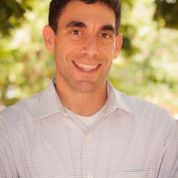 Adapt or Discard? A Teacher Shares His Experience Implementing the Next Generation Science Standards, From Struggle to Success
Adapt or Discard? A Teacher Shares His Experience Implementing the Next Generation Science Standards, From Struggle to Success
by Mike Mangiaracina, a K–5 science specialist in Washington, D.C. (published in Science & Children)
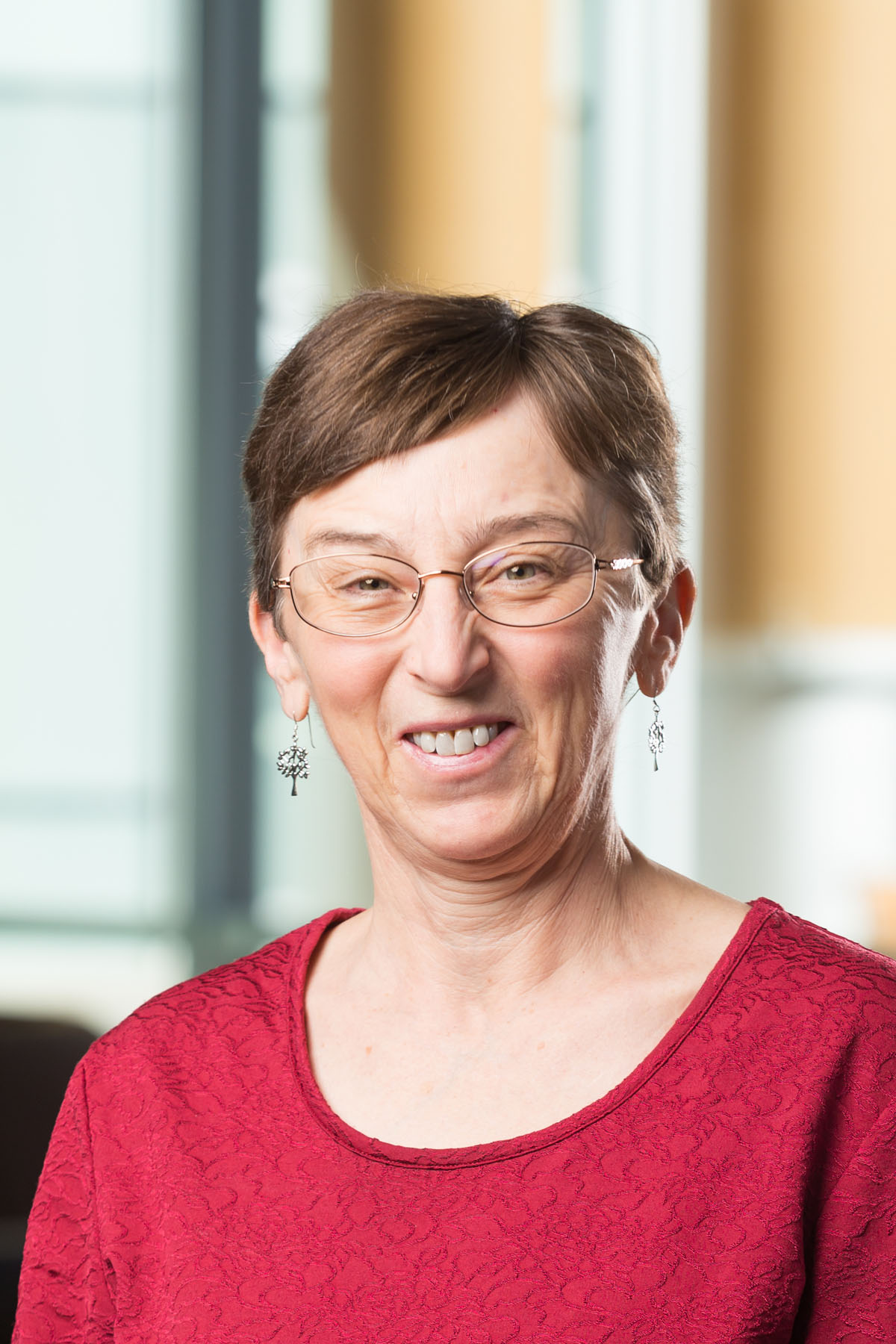 My Journey to Understand and Implement the NGSS: One Educator Shares the Story of How She Engaged and Ultimately Embraced the Next Generation Science Standards
My Journey to Understand and Implement the NGSS: One Educator Shares the Story of How She Engaged and Ultimately Embraced the Next Generation Science Standards
by Karen Mesmer, a recently retired middle school science teacher and science coach in Baraboo, Wisconsin.
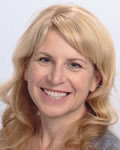 Climbing the NGSS Mountain: Persistence and a Sense of Purpose Can Propel You to the Top
Climbing the NGSS Mountain: Persistence and a Sense of Purpose Can Propel You to the Top
by Tricia Shelton, a high school science teacher in Florence, Kentucky.
The mission of NSTA is to promote excellence and innovation in science teaching and learning for all.
Future NSTA Conferences
2017 National Conference
STEM Forum & Expo
Follow NSTA
Every teacher of science in a school in which NGSS is being implemented is engaged in a transition to standards that are very different from what they are familiar with. This can spark many emotions, including excitement, fear, inspiration, fear, and more excitement. It is a journey in which things are going well, and then you might stumble and fall. Then we must pick ourselves up and start moving again. I know because I am still a NGSS learner myself, and I talk to teachers about this regularly.
Permission to stumble on the road to successful implementation of NGSS
By Cindy Workosky
Posted on 2017-03-21
So what’s the connection between growth mindset and NGSS? It begins with our own mindsets. We need to know that the implementation of NGSS will be hard work. We will struggle, have a small success, then find ourselves back in the struggle again. For example, you taught a lesson on transfer of energy, and you are feeling pretty good until you realize that you didn’t even begin to address the crosscutting concepts. As teachers, we need to be okay with that. We have to give ourselves and the colleagues with whom we’re collaborating the permission to make mistakes and try again.
Mistakes equal learning for us as educators. Every time we grapple with a new situation, make a mistake, and learn from it, we grow brain neurons. So not only are we growing our mindset, but we are also growing our brains. Pretty impressive for an experienced educator to consider: I am really still learning!
The same is true for our students. We have to be ready to encourage risk taking among our students and to help foster the growth mindset and culture of learning and respect in the classroom. We will have to help students unlearn some of their expectations that you, the teacher, are going to give them the answer. Students will need to see that grappling with concepts is where the real learning happens. Students will need to be praised for work they do, when they persevere and develop a deep understanding, and solve meaningful, relevant problems.
I wanted to know what others thought about this topic, so I sought other educators’ opinions, and this is some of what I heard:
I agree wholeheartedly. It is a work in progress, as all new initiatives are: Grab your bearings and hold on. It’s not going to be easy. But in theory, it’s just applying the best teaching techniques from your personal teacher toolbox. (Third-grade teacher Tricia Dennis)
I couldn’t agree more. I’ve been playing with NGSS for [more than two] years, and now officially have one semester of our actual NGSS physics class under my belt. I have learned and reflected on so much and have found huge growth as a professional during this process. I am actually grateful for the change. It is really forcing me to rethink my practice and step outside my comfort zone. (High school science teacher, Teacher on Special Assignment, Becky McKinney)
I agree. Students are asked to continually and iteratively improve explanations for phenomena and designs that solve problems. I don’t think you can even start day [one] of any unit without understanding how critical it is to support and foster all students in seeking improvement. (Regional Science Coordinator Brian MacNevin)
Agree. For both students and teachers. It’s a requirement for the ideas of revision and essential to inquiry. Students need it as they try things that haven’t been done before, and teachers need to foster it in their students and themselves as they seek to differentiate and match education to students’ prior knowledge and experience. (High school science teacher and NGSS Instructional Coach Janet Lee)
Last but not least are the words from my NGSS eduhero:
It is absolutely critical. As you’ve heard me say, there must be a sliding scale of quality as we implement new standards. I know them as well as anyone, yet I still learn something new all the time. You just have to know to look for and expect growth. (Stephen Pruitt, Commissioner of Education at the Kentucky Department of Education)
We need to remember this transitioning to NGSS is a journey or a sliding scale of improvement, as Stephen says. We need to give ourselves and our students permission to be learners and builders of understanding on this journey.
Interesting Resources to Check Out
- Decades of Scientific Research That Started a Mindset Revolution
- Mindsets and Math/Science Achievement
- Nudges That Help Struggling Students to Succeed
- Do You Have a Growth Mindset
- Mindset Resources on Facebook
The mission of NSTA is to promote excellence and innovation in science teaching and learning for all.
Future NSTA Conferences
2017 National Conference
STEM Forum & Expo
Follow NSTA
So what’s the connection between growth mindset and NGSS? It begins with our own mindsets. We need to know that the implementation of NGSS will be hard work. We will struggle, have a small success, then find ourselves back in the struggle again. For example, you taught a lesson on transfer of energy, and you are feeling pretty good until you realize that you didn’t even begin to address the crosscutting concepts. As teachers, we need to be okay with that.
The Green Room: How Climate Change Affects Our Diet
By sstuckey
Posted on 2017-03-20
 Last year was the warmest year on record. Consequences of a warmer world include melting glaciers, rising sea levels, droughts, flooding, heat waves, and extreme weather. But how does climate change affect our food?
Last year was the warmest year on record. Consequences of a warmer world include melting glaciers, rising sea levels, droughts, flooding, heat waves, and extreme weather. But how does climate change affect our food?
Time magazine describes a “climate-change diet” that may force us to give up some popular foods made scarce by warmer temperatures and extreme weather (Worland 2016). Conversely, some food sources actually benefit from increased temperatures or more atmospheric CO2. For example, potato crops in Northern Europe have a longer growing season these days.
Still, other food species may suffer. Coffee, for example, is sensitive to increased drought conditions and pest populations. Many commercially valuable fish species in the United States have moved north to cooler waters. The Environmental Protection Agency (EPA) reports that American lobster, red hake, and black sea bass have moved up the east coast by more than 161 km since the late 1960s. Atlantic cod populations have declined for several decades due to warmer ocean temperatures (Meng, Oremus, and Gaines 2016). The EPA offers an excellent summary of climate impacts on our food supply.
Climate change and crops
To look specifically at the effects of climate change on crops, use the climate hot map produced by the Union of Concerned Scientists. Or check out National Geographic’s graphical depiction and explanation of climate change effects on crop production around the world. Finally, the Johns Hopkins Center for a Livable Future has developed an extensive agriculture curriculum with a climate change lesson plan that covers the basics of climate change and its effects on food production.
Climate change and fish
Have your students listen to an 11-minute podcast featuring Roger Griffis, climate change coordinator at the National Oceanic and Atmospheric Administration (NOAA) Fisheries. He presents a firsthand account of how fisheries respond to changes in fish populations.
For a chemistry perspective, students can watch a video about the effect of ocean acidification on shellfish harvests. Allow your students to explore the Rutgers School of Environmental and Biological Sciences OceanAdapt website. Changes in distribution are clearly visible for more than 100 marine species, and students can plot data by species, region, date, latitude, and depth.
Conclusion
Although it is unclear exactly what a “climate-change diet” may be, evidence shows that warmer temperatures affect our food supply. What we eat and where those species live are among the many changes at hand in this warming world.
Amanda Beckrich (aabeckrich@gmail.com) is the Upper School assistant director, International Baccalaureate (IB) diploma program coordinator, and an environmental science teacher at Christ Church Episcopal School in Greenville, South Carolina.
References
Meng, K.C., K.L. Oremus, and S.D. Gaines. 2016. New England cod collapse and the climate. PLoS ONE 11 (7): e0158487.
Worland, J. Time. 2016. The Climate-Change Diet. December 26.
Editor’s Note
This article was originally published in the March 2017 issue of The  Science Teacher journal from the National Science Teachers Association (NSTA).
Science Teacher journal from the National Science Teachers Association (NSTA).
Get Involved With NSTA!
Join NSTA today and receive The Science Teacher,
the peer-reviewed journal just for high school teachers; to write for the journal, see our Author Guidelines, Call for Papers, and annotated sample manuscript; connect on the high school level science teaching list (members can sign up on the list server); or consider joining your peers at future NSTA conferences.
 Last year was the warmest year on record. Consequences of a warmer world include melting glaciers, rising sea levels, droughts, flooding, heat waves, and extreme weather. But how does climate change affect our food?
Last year was the warmest year on record. Consequences of a warmer world include melting glaciers, rising sea levels, droughts, flooding, heat waves, and extreme weather. But how does climate change affect our food?
Legislative Update
Trump Releases “Skinny Budget” for FY2018
By Jodi Peterson
Posted on 2017-03-17
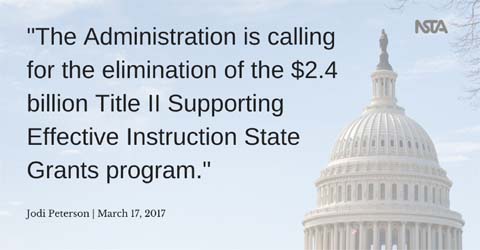
Administration’s Proposal Funds School Choice, Eliminates ESSA Title II and Afterschool Programs
President Trump released his “skinny budget” on Thursday, March 16 and as expected, the budget increases defense and security but cuts funding for key education programs.
The 2018 Budget proposes $59 billion for the Department of Education, a $9.2 billion cut to the Education Department’s $68 billion budget, which would cut agency spending by 13 percent below the 2017 CR level.
Funding for the two largest education programs—Title I (low income) and IDEA (special education)—was not cut. Trump’s plan seeks funding to expand choice options in public and private schools; he is proposing a $168 million increase for Charter Schools Program grants and a new $250 million private school choice program.
It would also increase Title I funds by $1 billion, with the funding available for “encouraging districts to adopt a system of student-based budgeting and open enrollment that enables federal, state and local funding to follow the student to the public school of his or her choice.” It is unclear what the intent of the funding would be, language in ESSA would allow 50 school districts to try out weighted student funding formulas which would consolidate federal, state, and local funding into one pot that would be allocated based on students’ needs. This suggests the creation of Title I portability programs, an idea/program which has been soundly rejected by Congress in previous years.
In the budget proposal, the Administration calls for the elimination of the $2.4 billion Supporting Effective Instruction State Grants program, which is Title II under ESSA (and was Title II under No Child Left Behind). Title II funds are used by schools and districts to improve teacher and principal quality and are primarily used to support teacher professional development. Read NSTA’s reaction to the budget here.
The President also calls for eliminating the $1.2 billion 21st Century Community Learning Centers afterschool program. During a press conference on the budget, Office of Management and Budget Director Mick Mulvaney said “there’s no demonstrable evidence” that afterschool programs help students. The Afterschool Alliance reaction is here.
There is no specific mention of funding in this “skinny budget” for programs under Title IVA Student Support and Academic Enrichment Grants program. The fate of this program is unclear since a larger budget proposal with more detail is expected to be released in early May.
The budget also proposes major reductions in funding for NIH, climate science, and other science-related programs across multiple agencies. Read more on the budget for science here.
In a statement announcing the budget, Secretary DeVos said, ”Today’s Budget Blueprint keeps with President Trump’s promise to focus the U.S. Department of Education on its mission to serve students. The budget places power in the hands of parents and families to choose schools that are best for their children by investing an additional $1.4 billion in school choice programs.”
It is important to remember that this budget proposal is just that and that Congress will make the final decision on how these programs are funded (or not).
Read the Washington Post overview of the entire budget proposal.
Secretary DeVos Issues Revised Template for State ESSA Plans
Secretary DeVos has issued a consolidated state plan template for state education leaders that lays out the information that is “absolutely necessary” for their ESSA plans.
As reported in the March 10th issue of the NSTA Legislative Update, the Senate and House have both overturned accountability regulations finalized last fall governing how school performance is judged under the new law. The accountability regulations were intended to direct the work of state stakeholders creating new plans required under ESSA to track low income students and intervene in high risk schools.
Democrats claim that the accountability rules were in place to ensure that states weigh students’ test scores and graduation rates heavily when they calculate which schools are succeeding and which are failing. Republicans said the accountability rules were an overreach, and that states should follow what was outlined in the ESSA statute.
Most states are working on their ESSA plans and must submit them either in April or September to meet federal deadlines (the April date was extended to May).
To view where your state is with their ESSA plan activities, go to ASCD’s ESSA State Implementation Map. Learn more about how you can ensure STEM is part of ESSA at www.successwithstem.org. To read more about the Secretary’s revised template go here.
STEM education Focus of Senate Appropriations Hearing
Finally, last week four witnesses—including NSTA member and NSELA Executive Director Larry Plank—testified before the Senate Labor HHS and Education Appropriations Subcommittee about the need for continued investments in STEM education. Click here for highlights from the STEM Education Coalition and see Planks testimony (at 42 mins) here.
Stay tuned, and watch for more updates in future issues of NSTA Express.
Jodi Peterson is the Assistant Executive Director of Communication, Legislative & Public Affairs for the National Science Teachers Association (NSTA) and Chair of the STEM Education Coalition. Reach her via e-mail at jpeterson@nsta.org or via Twitter at @stemedadvocate.
The mission of NSTA is to promote excellence and innovation in science teaching and learning for all.
Follow NSTA

Administration’s Proposal Funds School Choice, Eliminates ESSA Title II and Afterschool Programs
President Trump released his “skinny budget” on Thursday, March 16 and as expected, the budget increases defense and security but cuts funding for key education programs.
NSTA Books, eBooks+, and Journals win 2017’s highest honors in educational publishing – REVERE Awards
By Claire Reinburg
Posted on 2017-03-17
 The Association of American Publishers PreK–12 Learning Group has just announced 2017’s winners of the prestigious REVERE Awards, education publishing’s highest honors. The 2017 REVERE Awards honor print and electronic resources for PreK–12 teachers and learners in the classroom setting and beyond. Browse this year’s best of the best in educational resources in AAP’s gallery of 2017 REVERE Award winners and finalists, including these seven NSTA publications.
The Association of American Publishers PreK–12 Learning Group has just announced 2017’s winners of the prestigious REVERE Awards, education publishing’s highest honors. The 2017 REVERE Awards honor print and electronic resources for PreK–12 teachers and learners in the classroom setting and beyond. Browse this year’s best of the best in educational resources in AAP’s gallery of 2017 REVERE Award winners and finalists, including these seven NSTA publications.
Supplemental Resources
 NSTA Press’s book Inquiring Scientists, Inquiring Readers in Middle School: Using Nonfiction to Promote Science Literacy, Grades 6-8, by Terry Shiverdecker and Jessica Fries-Gaither, is Winner of the REVERE Award for Supplemental Resources–Interdisciplinary Resources. These research-based, classroom-tested lessons integrate all aspects of literacy (reading, writing, speaking, listening, and viewing) with engaging science activities for middle school students. The authors show that embedding nonfiction text and literacy activities into inquiry-based science honors the best practices of both disciplines. The lively activities cover topics from sunlight and the seasons to chemistry, toys, and accidental inventions, all presented in ways so students see the relevance and importance of science in everyday life.
NSTA Press’s book Inquiring Scientists, Inquiring Readers in Middle School: Using Nonfiction to Promote Science Literacy, Grades 6-8, by Terry Shiverdecker and Jessica Fries-Gaither, is Winner of the REVERE Award for Supplemental Resources–Interdisciplinary Resources. These research-based, classroom-tested lessons integrate all aspects of literacy (reading, writing, speaking, listening, and viewing) with engaging science activities for middle school students. The authors show that embedding nonfiction text and literacy activities into inquiry-based science honors the best practices of both disciplines. The lively activities cover topics from sunlight and the seasons to chemistry, toys, and accidental inventions, all presented in ways so students see the relevance and importance of science in everyday life.
Professional Resources
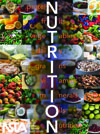 NSTA’s eBooks+ Nutrition, is Winner of the REVERE Award for Professional Resources–Innovation. Maintaining a healthy lifestyle requires making informed decisions about personal nutrition using information backed by scientific research. Nutrition, a highly interactive, self-directed professional learning experience, provides an overview of how food, nutrients, and energy are used by the body and how other factors contribute to making healthful choices. Rich with dynamic multimedia, interactive enhancements, and pedagogy, this e-book immerses educators in learning about
NSTA’s eBooks+ Nutrition, is Winner of the REVERE Award for Professional Resources–Innovation. Maintaining a healthy lifestyle requires making informed decisions about personal nutrition using information backed by scientific research. Nutrition, a highly interactive, self-directed professional learning experience, provides an overview of how food, nutrients, and energy are used by the body and how other factors contribute to making healthful choices. Rich with dynamic multimedia, interactive enhancements, and pedagogy, this e-book immerses educators in learning about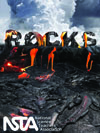 nutrition. NSTA’s eBooks+ Rocks is honored as a Finalist this year. The Rocks eBooks+ studies different kinds and categories of rocks, the major formation processes, and the cyclical nature of formation and transformation of rock. A third NSTA eBooks+, Discover the NGSS, is also honored in the category of Professional Resources–Instruction and Classroom Practice. Discover the NGSS: Primer and Unit Planner offers a comprehensive introduction to the Next Generation Science Standards. This interactive e-book undertakes an exploration of the three dimensions of the NGSS—the science and engineering practices, disciplinary core
nutrition. NSTA’s eBooks+ Rocks is honored as a Finalist this year. The Rocks eBooks+ studies different kinds and categories of rocks, the major formation processes, and the cyclical nature of formation and transformation of rock. A third NSTA eBooks+, Discover the NGSS, is also honored in the category of Professional Resources–Instruction and Classroom Practice. Discover the NGSS: Primer and Unit Planner offers a comprehensive introduction to the Next Generation Science Standards. This interactive e-book undertakes an exploration of the three dimensions of the NGSS—the science and engineering practices, disciplinary core  ideas, and crosscutting concepts. Using numerous interactive elements, learners analyze classroom videos, answer questions, and develop arguments from evidence while becoming proficient at understanding the structure and significance of the three dimensions.
ideas, and crosscutting concepts. Using numerous interactive elements, learners analyze classroom videos, answer questions, and develop arguments from evidence while becoming proficient at understanding the structure and significance of the three dimensions.
 In the category of Professional Resources–Specific Learning Populations, NSTA Press book Science Learning in the Early Years: Activities for PreK-2, by Peggy Ashbrook, is Winner of the REVERE Award. Engaging children in science activities in the early years capitalizes on their inquisitiveness while introducing them to key skills they’ll use through a lifetime of learning and investigation. This book provides more than 40 activities, all clearly presented and developmentally appropriate for young scientists PreK to 2. Throughout, the author’s focus is on play-based delightful experiences for early childhood learners that enhance and maintain children’s natural curiosity and abilities. The winning book encompasses many of Ashbrook’s writings in her Early Years columns for NSTA’s elementary journal Science and Children. Honored as a Finalist in the category Professional Resources– Subject Areas is NSTA Press book
In the category of Professional Resources–Specific Learning Populations, NSTA Press book Science Learning in the Early Years: Activities for PreK-2, by Peggy Ashbrook, is Winner of the REVERE Award. Engaging children in science activities in the early years capitalizes on their inquisitiveness while introducing them to key skills they’ll use through a lifetime of learning and investigation. This book provides more than 40 activities, all clearly presented and developmentally appropriate for young scientists PreK to 2. Throughout, the author’s focus is on play-based delightful experiences for early childhood learners that enhance and maintain children’s natural curiosity and abilities. The winning book encompasses many of Ashbrook’s writings in her Early Years columns for NSTA’s elementary journal Science and Children. Honored as a Finalist in the category Professional Resources– Subject Areas is NSTA Press book  Uncovering Student Ideas in Earth and Environmental Science: 32 New Formative Assessment Probes, by Page Keeley and Laura Tucker. Formative assessment probes give teachers an easy way to uncover ideas and misconceptions students have about a particular topic. Armed with this information, teachers can structure learning experiences that guide students to deeper understanding. This book offers assessment tools about key areas of Earth and environmental science such as water cycle, weather, climate, weathering and erosion, pollution, and human impact. Included are field-tested teacher materials that provide science background and link to national standards. This volume is the latest addition to Keeley’s 10-volume Uncovering Student Ideas in Science series.
Uncovering Student Ideas in Earth and Environmental Science: 32 New Formative Assessment Probes, by Page Keeley and Laura Tucker. Formative assessment probes give teachers an easy way to uncover ideas and misconceptions students have about a particular topic. Armed with this information, teachers can structure learning experiences that guide students to deeper understanding. This book offers assessment tools about key areas of Earth and environmental science such as water cycle, weather, climate, weathering and erosion, pollution, and human impact. Included are field-tested teacher materials that provide science background and link to national standards. This volume is the latest addition to Keeley’s 10-volume Uncovering Student Ideas in Science series.
Magazines
 The Science Teacher, NSTA’s journal for high school teachers, is Winner of the Magazines: Editorial–Departments and Sections REVERE Award for the “Focus on Physics” column. A new column launched in 2016, “Focus on Physics” uses cartoonish drawings and clearly written text to help teachers build an understanding of physical principles among their students. The Science Teacher sought out Paul G. Hewitt, author of a popular physics textbook, to write and illustrate this column.
The Science Teacher, NSTA’s journal for high school teachers, is Winner of the Magazines: Editorial–Departments and Sections REVERE Award for the “Focus on Physics” column. A new column launched in 2016, “Focus on Physics” uses cartoonish drawings and clearly written text to help teachers build an understanding of physical principles among their students. The Science Teacher sought out Paul G. Hewitt, author of a popular physics textbook, to write and illustrate this column.
Each year the REVERE Awards honor the best in education resources and draws attention to the rich array of high-quality teaching materials developed across the educational publishing community. Congratulations to the authors and to the NSTA Press Books, NSTA eBooks+, and NSTA Journals editorial, design, and production teams on these seven Winner and Finalist honors in the 2017 REVERE Awards. For the full list of the 2017 Winners and Finalists, visit the REVERE Awards pages.
 The Association of American Publishers PreK–12 Learning Group has just announced 2017’s winners of the prestigious REVERE Awards, education publishing’s highest honors. The 2017 REVERE Awards honor print and electronic resources for PreK–12 teachers and learners in the classroom setting and beyond.
The Association of American Publishers PreK–12 Learning Group has just announced 2017’s winners of the prestigious REVERE Awards, education publishing’s highest honors. The 2017 REVERE Awards honor print and electronic resources for PreK–12 teachers and learners in the classroom setting and beyond.
Ed News: Girls Draw Even With Boys In High School STEM Classes
By Kate Falk
Posted on 2017-03-17

This week in education news, girls now make up about half the enrollment in high school STEM classes; new proposed California bill would exempt teachers from paying state income taxes; U.S. Education Secretary releases new ESSA guidelines; results of the Illinois’ state science test delayed more than a year; and the Trump Administration proposes a $9 billion cut to the U.S. Department of Education.
Girls Draw Even With Boys In High School STEM Classes, But Still Lag In College And Careers
Thanks to long-standing efforts by teachers, administrators and nonprofits, girls now make up about half the enrollment in high-school science and math classes. But progress lags beyond the walls of high schools. The percentage of women majoring in STEM fields at California State University, for example, has remained a steady 37 percent since 2007, even though women make up 55 percent of all undergraduates. Click here to read the article featured in EdSource.
California Bill Would Exempt Veteran Teachers From State Income Taxes
Two California state senators think the solution to the state’s teacher shortages can be found in its tax code. Senate Bill 807 would exempt teachers with more than five years of experience from paying state income taxes for the next ten years. That would essentially give every veteran teacher a 4 percent to 6 percent raise overnight. Click here to read the article featured in Education Week.
U.S. Secretary of Education Betsy DeVos Releases New ESSA Guidelines
In a letter sent this week to chief state school officers, U.S. Secretary of Education Betsy DeVos released a new form for states to use in developing their accountability plans for the ESSA. Read the letter here and click here to read the official statement issued by the U.S. Department of Education.
Results Of Illinois State Science Test Delayed More Than A Year
Illinois schools will have to wait until at least summer 2017 to get the results of the state science tests students took in 2016. More than 400,000 students took the inaugural Illinois Science Assessment last year, which was administered to students in fifth and eighth grades and to students who took biology and advanced biology in high school. Click here to read the article featured in the Naperville Sun.
Senate Committee Pushes ‘Religious Expression’ Bill Forward
Sen. Dennis Baxley promises his religious expression in public schools legislation will “let freedom ring,” but opponents worry about what they describe as the bill’s vague language. The bill, SB 436, and its companion legislation, HB 303, narrowly moved forward at Tuesday’s judiciary committee meeting in a 5-4 vote. Click here to read the article featured on TCPalm.com.
Trump Budget Would Make Massive Cuts To Education Department, But Boost School Choice
President Donald Trump’s first budget seeks to slash the Education Department’s roughly $68 billion budget by $9 billion, or 13 percent in the coming fiscal year, cutting popular programs that help districts offer after-school programs, and hire and train teachers. At the same time, it seeks a historic $1.4 billlon federal investment in school choice, including new money for private school vouchers and charter schools, as well as directing $1 billion to follow students to the school of their choice. Click here to read the article featured in Education Week.
Packed Crowd For Idaho Climate Change Hearing
A Boise Democrat who was blocked by a key Republican lawmaker from holding a legislative hearing on climate change succeeded in securing more than 500 attendees when she decided to host her own event at the Idaho Capitol. Click here to read the article by the Associated Press.
Embracing New Ways Of Teaching Science And Language With English Learners
Learning academic content can be a challenge for students who have not yet mastered the English language, especially when it comes to science. But too often, instruction with English learners focuses on the development of vocabulary and grammar rather than authentic engagement with science disciplines. New ideas of language learning call into question this narrow focus on vocabulary and grammar. Click here to read the article in Education DIVE.
Stay tuned for next week’s top education news stories.
The Communication, Legislative & Public Affairs (CLPA) team strives to keep NSTA members, teachers, science education leaders, and the general public informed about NSTA programs, products, and services and key science education issues and legislation. In the association’s role as the national voice for science education, its CLPA team actively promotes NSTA’s positions on science education issues and communicates key NSTA messages to essential audiences.
The mission of NSTA is to promote excellence and innovation in science teaching and learning for all.
Follow NSTA

This week in education news, girls now make up about half the enrollment in high school STEM classes; new proposed California bill would exempt teachers from paying state income taxes; U.S. Education Secretary releases new ESSA guidelines; results of the Illinois’ state science test delayed more than a year; and the Trump Administration proposes a $9 billion cut to the U.S. Department of Education.
Ideas and inspiration from NSTA’s March 2017 K-12 journals
By Mary Bigelow
Posted on 2017-03-16
Regardless of what grade level you teach, you the resources in this month’s journals can help make this summer’s eclipse a memorable occasion for your students. Not all students will be back to school on August 21, so this spring is a good time to spark their interest and provide resources.
Each issue includes the 2016 Outstanding Science Trade Books for Students K–12.
 The Science Teacher — Eclipse
The Science Teacher — Eclipse
“Planetary science is well worth revisiting in our high schools, if only to give students better understanding and appreciation of the majestic Sun-Earth-Moon system we experience every day,” according the TST editor. Especially since many for many high school students, there most recent exposure to Earth and Space Science may have been in middle school (or earlier). This summer’s eclipse is a good context to revisit and expand their experiences.
The lessons described in the articles include connections with the NGSS.
- Total Eclipse shows how this event can be an opportunity for 3-dimensional learning.
- Modeling the Eclipse has ideas for studying eclipses through observations, planetarium and virtual modeling, as well as mathematical and physical modeling,
- The authors of Chasing Shadows suggest that the upcoming eclipse is also an opportunity for students to study exoplanets and astronomical transits.
- In The Future of Energy, students use scientific argumentation to compare, analyze, and evaluate energy sources.
- Better Formative Assessment describes ways to analyze and assess student learning (and misconceptions).
- Science 2.0: Help Students Become Global Collaborators through citizen science projects.
- The Green Room: How Climate Change Affects Our Diet has resources to study the impact of climate change on crops, fishing, and other parts of the global food supply.
- Introducing students to the laws of physics can be done without an emphasis on computation. Focus on Physics: Teaching Physics as the Rules of Nature illustrates resources and graphics.
For more on the content that provides a context for projects and strategies described in this issue, see the SciLinks topics Climate Change, Eclipses, Food Crops, Life on Other Planets, Moon Phases, Planets, Sustainable Agriculture, Sunspots, Torricelli.
Continue for Science Scope and Science and Children.
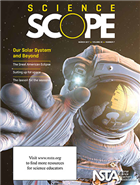 Science Scope – Our Solar System and Beyond
Science Scope – Our Solar System and Beyond
“Helping students understand the celestial mechanics behind a solar eclipse is just one way that you explore our solar system to better appreciate how our home planet fits into the big picture.” From the Editor’s Desk: When a Shadow Sheds Light
Featured articles in this issue that describe lessons include a helpful sidebar (“At a Glance”) documenting the big idea, essential pre-knowledge, time, and cost. The lessons also include connections with the NGSS.
- Are You Dressed for a Spacewalk? Harnessing Student Interest in Space Exploration to Engage Them in Energy and Engineering taps into students’ interest in space with an engineering project to design a “space suit.”
- Even if you’re not in the path of the eclipse, The August 2017 Total Solar Eclipse: The Perfect Opportunity to Highlight Three-Dimensional Science Learning has ideas for helping students understand phases of the moon, partial eclipses, and why they occur so infrequently.
- Make your astronomy activities more inclusive with the ideas and resources in Skynet Junior Scholars: Authentic Astronomy for All, Including Deaf and Hard-of-Hearing Students
- Moving Students Toward a More Accurate View of the Solar System goes beyond misconceptions about the size and scope of the solar system with modeling, questioning, and observing.
- Sunrise, Sunset: Using Personal Observations to Understand Changing Sun Patterns from an Earth Perspective looks at the positions of the Earth and sun and changes that can be observed.
- Citizen Science: Out of this World Citizen Science—Sun, Space, and Your Mission: Starlight describes a project from the Royal Society of Chemistry in which students around the world share their data from investigations into UV light.
- Disequilibrium: The Bernoulli Bag has a 5E lesson that shows the principle in action.
- Our colleagues share their resources and ideas in this month’s Listserv Roundup: Four Stellar Modeling Resources for Those Who Teach About the Sun and Solar System
- Scope on the Skies: Beyond Earth’s Orbit has background information on the topic.
- “Reasons for the seasons” is a classic study of student misconceptions, as described in Teacher to Teacher: Tackling Misconceptions About Seasons
For more on the content that provides a context for projects and strategies described in this issue, see the SciLinks topics Astronomy, Bernoulli’s Principle, Eclipses, Phases of the Moon, Seasons, Solar System, Space Exploration, Sun, Telescopes, UV Index
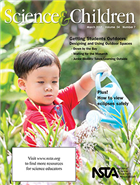 Science & Children – Getting Students Outdoors
Science & Children – Getting Students Outdoors
“Whether it is a small plot of grassy area, the blacktop around the school, a park
down the street, a vast field, or a deck constructed over a marsh … get students outdoors.” The articles this month show interdisciplinary activities and learning experiences that take advantage of students’ interest in their surroundings.
The lessons described in the articles include connections with the NGSS.
- “Sometimes, creating an outdoor space means using existing natural spaces for creative and engaging experiences” such as those described in Down by the Bay — with ideas for other local studies.
- Waiting for the Monarch illustrates how to combine gardening with a study of butterflies and their metamorphosis, in the context of studying biodiversity.
- Junior BioBlitz Takes Learning Outside for elementary students and their communities as they learn about local biodiversity. The Early Years: Exploring Biodiversity has ideas for similar activities with young children.
- Our OASIS shows how to connect elementary and high school students through a summer science camp. The camp agenda is included, along with planning suggestions.
- Preparing for the Eclipse and Eclipses and Eye Safety have suggestions for viewing and studying the upcoming eclipse safely.
- Teaching Through Trade Books: Adaptations for Survival has two 5E lessons (and related books) for learning about plant adaptations for spreading seeds and animal adaptations for surviving harsh habitats as well as changing habitats.
- Science 101: Does the Weather Affect Your Body? What effects do temperature, humidity, air pressure have?
For more on the content that provides a context for projects and strategies described in this issue, see the SciLinks topics Adaptations of Animals, Biodiversity, Butterflies, Eclipse, Environment, Factors Affecting Plant Growth, Fossils, Marine Ecosystems, Metamorphosis, Weather
Regardless of what grade level you teach, you the resources in this month’s journals can help make this summer’s eclipse a memorable occasion for your students. Not all students will be back to school on August 21, so this spring is a good time to spark their interest and provide resources.



